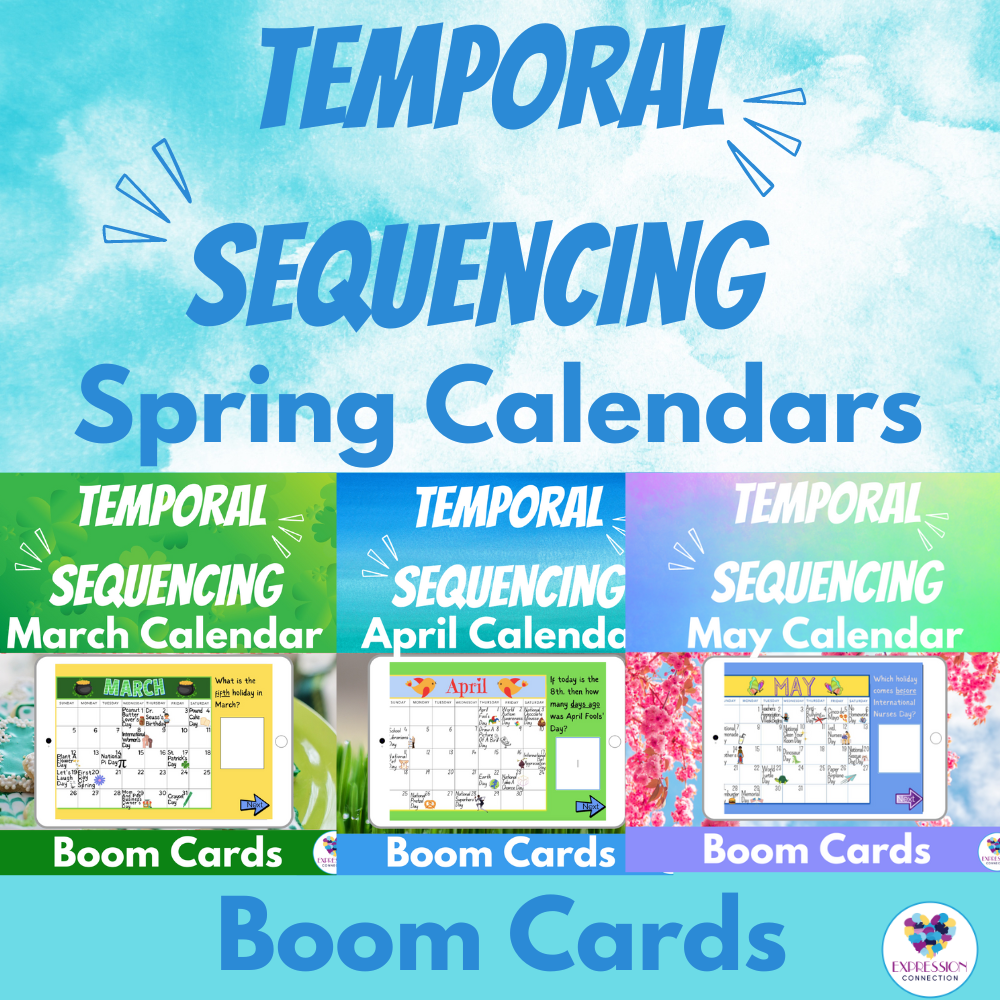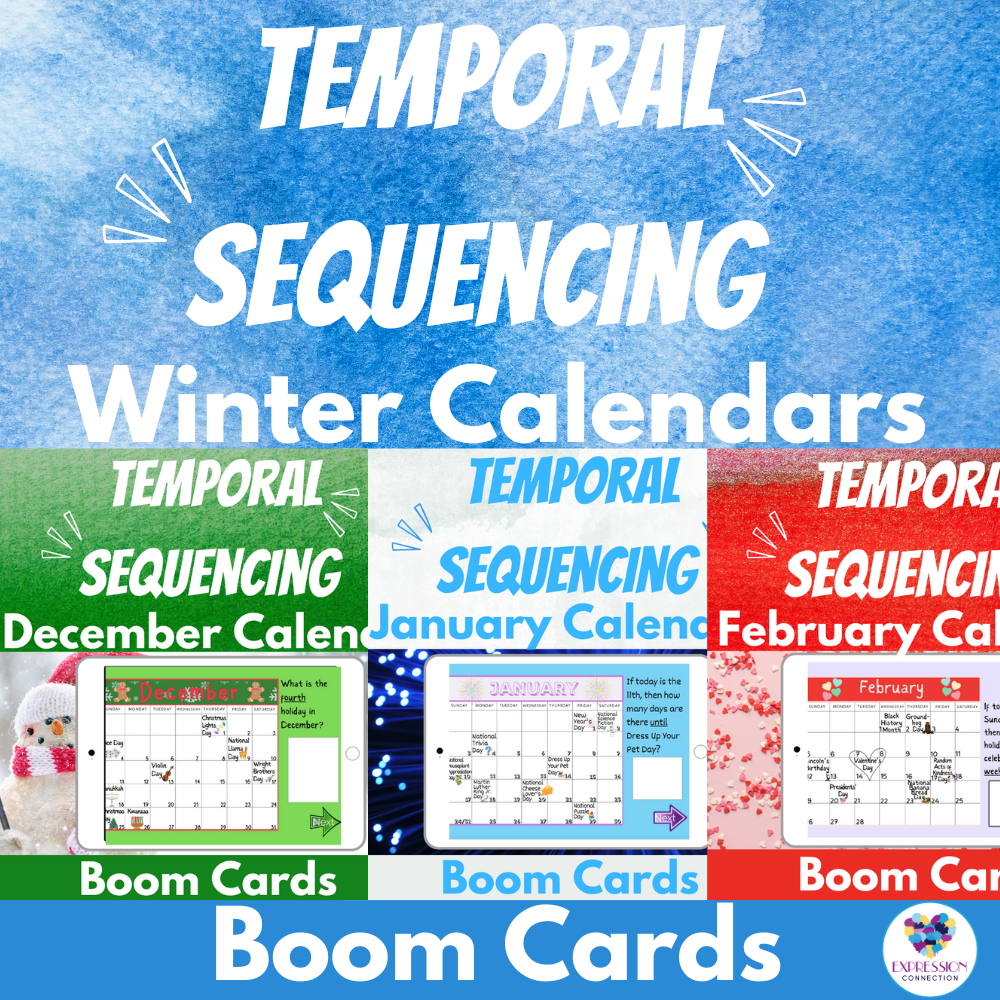Temporal sequencing concepts such as “first,” “last,” and “yesterday” are so common it’s easy for parents and teachers to assume that children understand what we mean when we use them in sentences to request or make a statement. So, when a teacher asks, “Will the last person in line please turn out the lights?” and the student doesn’t respond, they may think that the last child didn’t listen or was being defiant. When actually, the student doesn’t understand the concept of “last.” Speech pathologists can help avoid this type of miscommunication by informally screening for deficits in students’ temporal sequencing skills during therapy sessions.
What is temporal sequencing? Why is this an important skill?
Temporal sequencing is the ability to understand and order events in time. It is a skill that is necessary to help children follow directions, understand the order of events, and make predictions. It includes words such as “before,” “during,” “after,” “next,” and “last.” Another real-world example would be a teacher saying, “Write your name on your paper before you turn it in.”
Most children are familiar with calendars. They are used to teach the days of the week and months of the year from the beginning of a student’s education. Drawing on what a person is already familiar with helps with learning and retention. Therefore, using a calendar is an effective way for speech pathologists, teachers, or parents to teach temporal sequencing.
Here are some tips for using a calendar to teach temporal sequencing skills:
- Highlight important dates: Highlight important dates such as birthdays, holidays, and special events on your wall calendar, and discuss with children what they know about these events and the order they occur in relation to each other. For example, “Mother’s day will be in three weeks. What day will it be the day after Mother’s Day?”
- Role Play: Let your child practice using time vocabulary by role-playing. First, brainstorm with your child a list of temporal sequencing questions to ask, and write those questions down. Show your child a labeled calendar and ask them to point out today’s date. Then using the list, have them ask you questions like, “How many days is it until my class goes to the Science Museum?” or “What week in the month was Matthew’s birthday?” or “What is the day after tomorrow?”
- Incorporate games: Play “Simon says!” This is a fun way to help your child develop a strong foundation for time vocabulary. For example, “Simon says, point to the third Sunday in March, after you point to the day after the 12th.”
In summary, temporal sequencing is necessary for following directions, understanding the order of events, and making predictions. Using a calendar to highlight important dates, encourage language through role-play, and play temporal sequencing games can help children develop their temporal sequencing skills, thus improving their overall language and communication abilities.
These Boom™ Cards and TPT worksheets and Google™Slides are perfect for teaching students temporal sequencing skills.










